Loading
Journal of Cellular and Molecular Immunology
ISSN: 2833-1141
All Articles
Identification and validation of N7-methylguanosine-associated gene NCBP1 as prognostic and Prognostic immune-associated biomarkers in breast cancer patients
Yusi Yang, Lin Zheng, Jianrong Li, Baiqi Wen
Epigenetics is the study of heritable modifications to gene expression, such as DNA methylation, histone modifications, and RNA modifications, that do not alter the nucleotide sequence of the corresponding gene. Recently, RNA modification has emerged as a novel research focus. We have detected over 170 different RNA modifications, such as N6-methyladenosine (m6A), N7-methylguanosine (m7G), 5-methylcytosine (m5C), N1-methyladenosine (m1A), N3-methylcytosine (m3C), and pseudouridine (ψ).These modifications are important for biological processes like RNA metabolism and post-transcriptional regulation.
J Cell Mol Immunol, 2024, Volume Volume 3, Issue Issue 1, p1-2 | DOI: 10.46439/immunol.3.023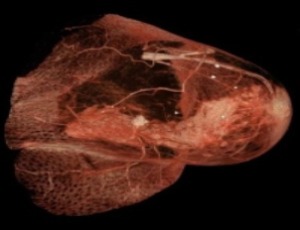
Mass food challenges in a vacant COVID-19 step-down facility: reflections on the management of anaphylaxis
Jason Foran, David Coghlan
A popular western misconception dating back to at least the time of President John F Kennedy is that one of the Chinese characters in the word “crisis” means opportunity. The manuscript
“Management of anaphylaxis in children undergoing oral food challenges in an adapted COVID-19 field hospital” [1] detailed a highly successful attempt to not only mitigate the effects of the crisis for
elective care brought by the COVID-19 pandemic but to seek to maximize the opportunity by better utilization and redeployment of staff allowing the team to reduce pre-pandemic waiting lists by 57%.

BRCA1 and BRCA2 mutation variants in early breast cancer confer added prognostic information
Nuhad K. Ibrahim, Banu Arun
Metastatic breast cancer to brain carries poor prognostic features with increased risks of occurrence in Tripple- negative and HER- positive breast tumors. In addition, tumors with mutated BRCA tumors, carry as well increased metastatic incidence. However, new clinical evidence suggest distinct clinical features between BRCA1 or BRCA2 mutated breast cancer and brain metastasis. Review of literature may help characterize the distinctive differences between BRCA1 or BRCA2 breast tumors and subsequent metastasis to brain.
J Cell Mol Immunol, 2023, Volume Volume 2, Issue Issue 1, p1-5 | DOI: 10.46439/immunol.2.012
Update on glomerulonephritis: How to classify and how to treat
Martin Klaus, Matteo Abinti, Marc Patricio Liébana, Hans-Joachim Anders
The term glomerulonephritis (GN) describes immune-mediated disorders of the kidney’s filtration units (the glomeruli). Current classifications are based on histopathological lesion patterns. However, different underlying conditions can lead to similar tissue injury and lesions but the respective therapy depends on the underlying disease.
J Cell Mol Immunol, 2025, Volume Volume 4, Issue Issue 1, p1-8 | DOI: 10.46439/immunol.4.032
The importance of assessing a family’s information-sharing strategy in pediatrics
Rebecca D. Pentz
In “Family Strategies to Support Siblings of Pediatric Hematopoietic Stem Cell Transplant Patients”, we described the 10 strategies used by families to support siblings. One of the strategies was sharing information. Interestingly, only about one third of the parents (Fathers (7/21, 33.3%), and Mothers (8/20, 40%)) indicated that they shared information with the patient about the transplant decision while over half of the children (10/17, 59%) reported that information was shared with them.
J Cell Mol Immunol, 2024, Volume Volume 3, Issue Issue 1, p3-5 | DOI: 10.46439/immunol.3.024
- Abstract |
- Full Text |
- Cite |
- Supplementary File
CD4+Foxp3+Helios+regulatory T cells: Role in immunostasis and clinical applications
Castillo-Aleman YM, Bencomo-Hernandez AA, Ventura-Carmenate Y
Since Gershon and Kondo’s initial description of suppressor T cells as antigen-specific T cells that regulate immune responses [1], several advances have taken place on the biology and potential applications of regulatory T cells (Tregs) in clinical settings. After that, Sakaguchi et al. identified Treg cells capable of protecting lymphopenic mice against autoimmune disease produced by neonatal thymectomy [2], and Morrissey et al.
J Cell Mol Immunol, 2022, Volume Volume 1, Issue Issue 1, p5-7 | DOI: 10.46439/immunol.1.002
Immune checkpoint inhibitor therapy-associated myocarditis – Toward identification of an immune signature that can improve diagnosis
Pourya Yarahmadi, Patricia Nguyen
Immune checkpoint inhibitors (ICI) have emerged as promising treatment options for many cancers. ICIs exert their therapeutic effects by targeting immune inhibitory molecules on T-cells in adaptive immunity, such as cytotoxic T-lymphocyte-associated antigen 4 (CTLA-4), programmed cell death 1 (PD-1) and its ligand programmed cell death ligand 1 (PD-L1). ICIs, however, can result in a wide variety of immune-related adverse events (iRAE), including myocarditis, a rare and potentially deadly complication that necessitates early diagnosis.
J Cell Mol Immunol, 2023, Volume Volume 2, Issue Issue 1, p6-8 | DOI: 10.46439/immunol.2.013
Nuclear factor kappa-B: The El Dorado of inflammatory immune response
Sumon Mukherjee, Saikat Dutta, Subhadip Pati, Tania Sarkar, Silpita Paul, Sourio Chakraborty, Udit Basak, Subhanki Dhar, Tanya Das, Gaurisankar Sa
For more than a decade, the nuclear factor kappa-B (NFκB) family and their signaling pathways have proved crucial to the immune system's functioning. According to research, this factor is implicated in almost every immune system event, including immune cell development and function, activation, and pathogen-activated cell death. A considerable body of evidence suggests the idea that, in addition to being a possible transcription factor, it plays a very significant role in the establishment of inflammation-associated immunological responses in host cells. Inflammation is a cascade of events that involve vasodilation and immune cell migration to the site of infection in order to defend the host.
J Cell Mol Immunol, 2024, Volume Volume 3, Issue Issue 1, p6-19 | DOI: 10.46439/immunol.3.025
T helper cells: Top targets for Systemic Lupus Erythematosus treatment?
Haideh Namdari, Farhad Rezaei, Farzad Parvizpour
In the original research article, Parisa R et al. demonstrated that the induction of lupus-like autoimmune syndrome in BALB/c Mice caused disturbance in splenic T cell subpopulations. This study also elucidated those other mechanisms, apart from disturbance in T cells balance, may be responsible for the development of the disease’s symptoms [1].
J Cell Mol Immunol, 2022, Volume Volume 1, Issue Issue 1, p8-11 | DOI: 10.46439/immunol.1.003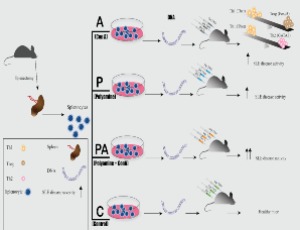
The role of EMMPRIN in Marfan syndrome-related thoracic aortic aneurysms: A commentary
Shannon Parness, Panagiotis Tasoudis
The authors of this study investigated the pathogenesis of thoracic aortic aneurysms (TAAs) in patients with Marfan Syndrome (MFS). The prevailing hypothesis attributes TAAs to the aberrant remodeling of the extracellular matrix, driven by matrix metalloproteinases (MMPs), which progressively degrade the vessel wall.
J Cell Mol Immunol, 2025, Volume Volume 4, Issue Issue 1, p9-10 | DOI: 10.46439/immunol.4.033
Insight into the application of nicotinamide mononucleotide (NMN) to age-related disorders
Masaki Igarashi, Toshimasa Yamauchi
Numerous animal studies have shown that the decrease in the tissue Nicotinamide Adenine Dinucleotide (NAD+) levels during aging are closely related to age-related physiological decline and that the administration of NAD+ precursors restore NAD+ levels and promotes health and prolongs lifespan. Therefore, in order to demonstrate whether NAD+ supplementation by NAD+ precursors mitigate age-related physiological dysfunction including muscle weakness in older men. We conducted a placebo-controlled, randomized, double-blind, parallel-group study in which Nicotinamide mononucleotide (NMN) was administered to healthy older men for 12 weeks.
J Cell Mol Immunol, 2023, Volume Volume 2, Issue Issue 1, p9-13 | DOI: 10.46439/immunol.2.014
Granulomatosis with polyangiitis triggered by SARS-CoV-2: Diagnostic challenges and clinical implications
Daniele Romanello, Sara Rotunno
Granulomatosis with polyangiitis (GPA), formerly known as Wegener’s granulomatosis, is an autoimmune vasculitis characterized by necrotizing inflammation of small- and medium-sized vessels, primarily affecting the lungs and kidneys.
J Cell Mol Immunol, 2025, Volume Volume 4, Issue Issue 1, p11-13 | DOI: 10.46439/immunol.3.034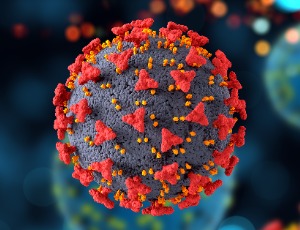
Vaccine for leishmaniasis: New era of CRISPR generated Live attenuated dermotropic Leishmania
Kamaleshwar Singh, Swarnendu Kaviraj, Subir Karmakar, Sanjay Singh
Using CRISPR gene-editing technology, researchers have generated a live attenuated centrin gene deleted Leishmania major parasites (LmCen-/-) which are able to protect against visceral leishmaniasis caused by Leishmania donovani parasite. Since LmCen-/- vaccine is antibiotic resistant marker free, safe and prevents mortality, scientists are planning to use it in Phase I human clinical trials.
J Cell Mol Immunol, 2022, Volume Volume 1, Issue Issue 1, p12-16 | DOI: 10.46439/immunol.1.004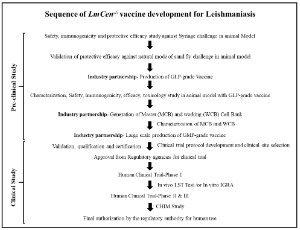
Coal workers' serum immunoglobulins provide hints for pneumoconiosis
Zhaoguo Li, Junling Pang, Peiran Yang, Jing Wang, Huaping Dai
Today, roughly 30% of the global energy needs are met by coal, according to the International Energy Agency. Over the past few decades, although many measures have been taken to protect workers against dust inhalation, coal workers’ pneumoconiosis (CWP) remains to be a significant threat to public health, especially in developing countries. Data from the global burden of disease (GBD) study showed that the number of pneumoconiosis cases increased by 66.0% from 1990 to 2017, reaching 60,000.
J Cell Mol Immunol, 2023, Volume Volume 2, Issue Issue 1, p14-15 | DOI: 10.46439/immunol.2.015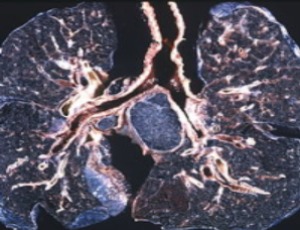
Insights into placental cell senescence in pregnancy, preeclampsia, and peripartum cardiomyopathy
Claire Castro, Kathryn J Gray, Jason D Roh
Cardiovascular disease (CVD) is a leading cause of maternal mortality worldwide. The molecular mechanisms underlying de novo CVD in pregnancy are not fully understood, which has limited targeted therapeutic development.
J Cell Mol Immunol, 2025, Volume Volume 4, Issue Issue 1, p14-18 | DOI: 10.46439/immunol.4.035
FXYD3-IL-17 positive feedback loop promotes psoriasis exacerbation
Meng Xia, Qingqing Wang
Psoriasis is primarily a chronic skin disease characterized by keratinocyte hyperplasia, as well as a systemic inflammatory disease associated with numerous comorbidities, including rheumatological psoriatic arthritis, cardiovascular and psychiatric complications. Approximately 2-3% of the global population is affected by psoriasis, and despite advances in the treatment, there are still limitations.
J Cell Mol Immunol, 2023, Volume Volume 2, Issue Issue 1, p16-18 | DOI: 10.46439/immunol.2.016
Vaccination, politics and COVID-19 impacts: update
Don Albrecht
In an earlier manuscript, the author found a strong relationship between political views, vaccination levels and COVID-19 death rates. This study revealed that in U.S. counties where large proportions of voters cast their ballot for Donald Trump in the 2020 presidential election, vaccination levels were lower and COVID-19 death rates were higher. This update explores this relationship six months later when more recent data are available. The updated analysis found that with the passage of time, the relationship between political views, vaccination levels and COVID-19 death rates became even stronger.
J Cell Mol Immunol, 2022, Volume Volume 1, Issue Issue 1, p17-19 | DOI: 10.46439/immunol.1.005
Exploring Immune Cell Profiles and NLRP3 Gene Expression as Potential Diagnostic Markers in COVID-19 Patients: A Commentary
Maedeh Radandish, Nafiseh Esmaeil, Alireza Andalib
The COVID-19 pandemic caused by the SARS-CoV-2 virus continues to impact populations worldwide, emphasizing the need for improved diagnostic and treatment strategies. Understanding the immune response and identifying early diagnostic markers are crucial in this endeavor. In this comprehensive commentary, we delve into a recent study that investigated the immune cell profiles and NLRP3 gene expression as potential diagnostic markers in COVID-19 patients.
J Cell Mol Immunol, 2023, Volume Volume 2, Issue Issue 1, p19-21 | DOI: 10.46439/immunol.2.017
The ontogeny of IgE forming cells
Dominick L. Auci
The origin and fate of IgE forming cells has commanded attention for more than 50 years largely because they drive allergic diseases that plague a third of the world’s most economically privileged populations. Ontogeny studies began in the early1980s with the expressed intent of locating these cells so that IgE production might be turned off at the source, at the level of the IgE forming B cell. They continue to the present day. The technological revolution at the turn of the last century neatly divides efforts. From the outset, IgE seemed unlike other isotypes. IgE forming cells did not appear to clone in germinal centers like other B cells, but to arise rapidly and transiently within gut after stimulation.
J Cell Mol Immunol, 2025, Volume Volume 4, Issue Issue 1, p19-25 | DOI: 10.46439/immunol.4.036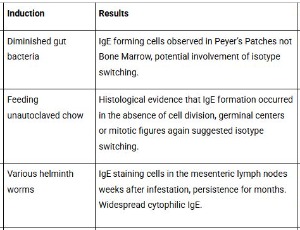
Nanoparticle-based drug delivery systems: Unveiling the immunological implications
Shilpy Bhullar
As the field of immunology continues to unravel the complexities of immune responses and their intersection with therapeutic interventions, the emergence of innovative drug delivery systems has sparked new avenues of exploration. The original research on FericipXT-coated PEGylated rutile TiO2 nanoparticles (NPs) in drug delivery has not only illuminated the realm of pharmaceutical science but also beckons the attention of immunologists, offering profound insights into the immunological implications of nanoparticle-based drug delivery systems.
J Cell Mol Immunol, 2024, Volume Volume 3, Issue Issue 1, p20-25 | DOI: 10.46439/immunol.3.026
Immunotherapy as a treatment to confront the ongoing opioid epidemic- A review
Nachum Dafny
Substance use disorders continue to be major medical and social problems worldwide. The use of opiate has grown substantially over the past three decades reaching the dimensions of a global epidemic. Current drug treatments have many limitations: long treatment times, dependency on treatment medications, relapses after treatment, high costs of treatment, and non-adherence by affected persons. Most of the available drug treatments for opiate addiction belong to the opioid family. Some worry that the availability of the drugs may simply cause substituting one opioid medication for another.
J Cell Mol Immunol, 2022, Volume Volume 1, Issue Issue 1, p20-27 | DOI: 10.46439/immunol.1.006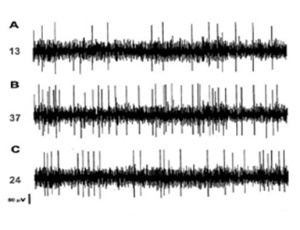
Commentary on Aplasia cutis congenita in monozygotic twins: What should we do further?
Hui-Jun Lai, Ping-Ping Ma, Mei-Yan Lai, Hong-Wei Guo
Aplasia cutis congenita (ACC) is a rare congenital anomaly characterized by a localized or widespread lack of skin at birth. Most information about ACC exists as individual case reports and medium-sized studies. Recently, a study based on the European network of population-based registries for congenital anomalies (EUROCAT) showed that the scalp is the most common site of ACC (96.4%), and 33.8% of cases have related congenital abnormalities. Patau and Adams-Oliver syndromes are the most common among the associated chromosomal anomalies (88.3%) and the associated genetic syndromes (57.7%).
J Cell Mol Immunol, 2023, Volume Volume 2, Issue Issue 1, p22-24 | DOI: 10.46439/immunol.2.018
The role of MRI in detecting and characterizing brain metastases from breast cancer
Sana Mohammadi, Sadegh Ghaderi
Brain metastases are a feared complication of breast cancer, occurring in 15-25% of patients and being associated with poor prognosis and reduced quality of life. Magnetic resonance imaging (MRI) is an advanced technique that uses powerful magnetic fields and radio waves to produce detailed three-dimensional (3D) images of the brain's neuroanatomy and any potential pathology, especially in the management of brain metastases. The review article by Mohammadi et al. provides a timely and comprehensive overview of the utility of MRI for detecting and characterizing brain metastases from breast cancer.
J Cell Mol Immunol, 2023, Volume Volume 2, Issue Issue 1, p25-26 | DOI: 10.46439/immunol.2.019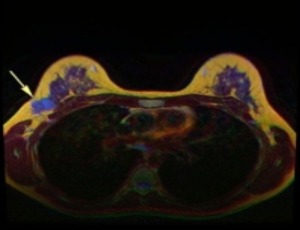
Scale adaptation and redevelopment: A review on validity and reliability
Esra Akaydın Gültürk
Scales are data collection tools that can measure characteristics such as knowledge, emotion, interest, perception, attitude, belief, disposition, risk, quality of life and behavior. The scale development process includes determining the theoretical foundations, creating the items, pilot study, validity and reliability analysis, and final implementation. In the stage of determining the theoretical foundations, the definitions of the construct that the scale wants to measure in the literature are examined and a conceptual framework is created. At the stage of creating the items, expert opinions are taken and their suitability in terms of language and meaning is evaluated.
J Cell Mol Immunol, 2024, Volume Volume 3, Issue Issue 1, p26-32 | DOI: 10.46439/immunol.3.027
Host’s innate immune response to SARS-CoV-2 infection—Current understanding and trends
Nitin Saksena
The COVID-19 pandemic, which began in 2019 due to SARS-CoV-2, remains a global health crisis, especially as new variants emerge that could trigger widespread outbreaks again. While various aspects of SARS-CoV-2 infection warrant attention, the antiviral innate immune response is a crucial area of focus.
J Cell Mol Immunol, 2025, Volume Volume 4, Issue Issue 1, p26-32 | DOI: 10.46439/immunol.4.037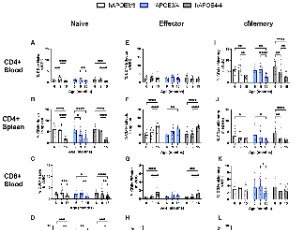
Unlocking the potential: Keto diet's impact on immunity, obesity, neurodegenerative diseases, and cardiovascular diseases
Vishakha Anand Pawar, Anuradha Tyagi, Vinay Kumar
An ancient proverb like “we are what we eat”, entails the significance and an influence of dietary habits and thereby nutrients on all living beings. A universal system encompasses various categories of classes that recognize consequences of various diets on immunity and thereby on the health of an individual. These mechanisms mainly consist of epigenetic machineries, metabolic pathways, circadian rhythms, and diet-responsive effectors. In this light, various clinical studies exhibit immune-modulatory and beneficial effects of interceding nutrients on various diseases.
J Cell Mol Immunol, 2023, Volume Volume 2, Issue Issue 1, p27-30 | DOI: 10.46439/immunol.2.020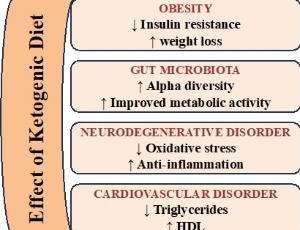
DNA hyper methylation editing of T cell receptor signaling and the fellow molecules: a promise strategy of predicting acquired immune checkpoint inhibitors (ICIs) resistance
Zixin Hu, Huijuan Cui
The promising results of immune checkpoint inhibitors (ICIs) in tumors have changed the current treatment modality for cancer. ICIs response prediction is urgently needed for the personalized therapy approach. In the recent issue of the Journal of Oncology, Zixin Hu et al. proposed that DNA methylation alternations contribute to tumor microenvironment (TME) reshapement to predict the ICIs response. Notwithstanding the global DNA methylation loss, the repression of T cell receptor signaling and the fellow costimulators by DNA hypermethylation contributed to the cold TME and ICIs resistance.
J Cell Mol Immunol, 2022, Volume Volume 1, Issue Issue 1, p28-31 | DOI: 10.46439/immunol.1.007
Inhibiting hypoxia-inducible factor in T cells strengthens effector-memory function in CD8+ T cells
Fan Pan, Farooq Riaz, Ping Wei
In a recent attempt to elucidate the role of HIF1α in modulating the fate of T cells, we have demonstrated that the targeted deletion of HIF1α, specifically in T cells, enhances the inflammatory capabilities and memory phenotype of CD8+ T cells. These findings validate that the T cell-specific ablation of HIF1α or pharmacological inhibition of HIF1α reduces the development of B16F10 melanomas, suggesting an improved anti-tumor immune response characterized by improved secretion of effector molecules, such as IFN-γ, granzyme B, and TNFα, in the CD8+ T cells. Thus, it appears that HIF1α might negatively influence specific effector functions of CD8+ T cells, which are crucial for destroying and targeting tumor cells.
J Cell Mol Immunol, 2023, Volume Volume 2, Issue Issue 1, p31-34 | DOI: 10.46439/immunol.2.021
Humoral immunodeficiency in a patient with Malan syndrome secondary to chromosome 19p13.2 microdeletions
Amer Khojah, Ameera Bukhari
Malan syndrome (Sotos Syndrome 2, OMIM 614753) is a rare autosomal dominant overgrowth disorder caused by either chromosome 19p13.2/19p13.13 microdeletion or Nuclear Factor 1 X-Type (NFIX) gene haploinsufficiency. Symptoms typically appear in infancy and include dysmorphic features, seizures, and behavioral issues; however, the degree of immune system involvement is not clear. Herein, we are reporting a case of Malan syndrome who presented to the immunology clinic with recurrent bacterial infections, including three episodes of pneumonia confirmed by chest X-ray.
J Cell Mol Immunol, 2022, Volume Volume 1, Issue Issue 1, p32-35 | DOI: 10.46439/immunol.1.008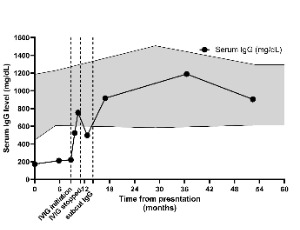
Case report: Typhoid fever due to laboratory acquired Salmonella paratyphi confirmed through antibiotic sensitivity testing
Shehreen Sohail, Kaleem Ullah, Fareeha Sohail
Enteric fever is a major public health concern in developing countries. Enteric fever can result from Salmonella typhi and Salmonella paratyphi infections after consuming contaminated food or water. The increase in widespread drug resistance is severely limiting treatment options for this serious disease. This case report covers a 23 year old patient history who got lab acquired infection of Salmonella paratyphi A infection. Initially, he experienced symptoms of fever, and irritability, which progressed to severe loose motions and high-grade fever.
J Cell Mol Immunol, 2024, Volume Volume 3, Issue Issue 1, p33-35 | DOI: 10.46439/immunol.3.028
Aging shapes baseline immunity in sterilehoused female hAPOE mouse genotypes
Fernandez F, Reyes-Reyes E, Chinnasamy D, Trial M, Rodgers KE
The Apolipoprotein E ε4 allele (APOE4) is a major risk factor in the development of late-onset Alzheimer’s Disease (LOAD; AD) and has been associated with altered immunological responses, particularly under inflammatory challenge. Whether APOE genotype shapes baseline peripheral immunity across aging remains unclear.
J Cell Mol Immunol, 2025, Volume Volume 4, Issue Issue 1, p33-39 | DOI: 10.46439/immunol.4.038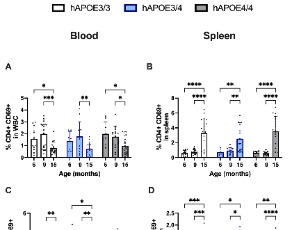
- Abstract |
- Full Text |
- Cite |
- Supplementary File
Multiple RNA-binding proteins associated with long interspersed element-1 encoded ORF1p are targeted by the autoimmune response in systemic lupus erythematosus
Kennedy C. Ukadike, Alyssa N. Colyer, Bhargavi Duvvuri, Anders A. Bengtsson, Martin S. Taylor, John LaCava, Christian Lood, Tomas Mustelin
Systemic lupus erythematosus (SLE) is a relatively common autoimmune disease characterized by the presence of autoantibodies against nucleic acids and proteins that associate with them, such as the ORF1p protein encoded by the long interspersed element-1 (LINE-1 or L1). Because well-known lupus autoantigens like RO60 associate with ORF1p in macromolecular assemblies, together with many other RNA-binding proteins, we tested whether these other proteins are also recognized by IgG autoantibodies in SLE patients. By ELISAs and immunoblots, we detected autoantibodies in the serum of SLE patients recognizing proteins encoded by LARP7, MOV10, ZCCHC3, MEPCE, YARS2, RPL18A, RPL27A, and H2BC17 (p<0.05), but not CORO1B, DDX6, PABPC1, and PABPC4, and were mostly absent or low in healthy controls.
J Cell Mol Immunol, 2023, Volume Volume 2, Issue Issue 1, p35-44 | DOI: 10.46439/immunol.2.022
Unraveling the heterogeneity of chronic inflammatory diseases: Lessons learned from axial spondyloarthritis (axSpA)
Florence W.L. Tsui, Robert D. Inman
A key feature of chronic inflammatory disease is heterogeneity. For clinicians, this poses problems not only in disease diagnosis and assessment, but also in providing personalized disease management for the patients. There are at least two explanations for disease heterogeneity: First, different patient subgroups have different etiologies and subsequent pathways involvement, leading to a similar clinical outcome. Secondly, patients have similar etiologies but with different pathway modulations in patient subgroups, resulting in different degree of clinical outcome.
J Cell Mol Immunol, 2022, Volume Volume 1, Issue Issue 1, p36-39 | DOI: 10.46439/immunol.1.009
Unveiling the health implications of vitamin K2 deficiency
Tao Zhang
Zhang et al. provide an extensive review titled "Vitamin K2 in Health and Disease: A Clinical Perspective", expanding on their earlier research. Vitamin K (VK) is a crucial cofactor for the γ-carboxylation of glutamic acid residues in VK-dependent proteins (VKDPs). The human body contains at least 17 different VKDPs, also known as Gla proteins, which can be classified into hepatic and extra-hepatic VKDPs based on their location of synthesis within the body. Hepatic VKDPs encompass coagulation factors II, VII, IX, and X, along with anticoagulant proteins C, S, and Z.
J Cell Mol Immunol, 2024, Volume Volume 3, Issue Issue 1, p36-40 | DOI: 10.46439/immunol.3.029
CTL-mediated APC elimination: Constraining effective humoral immunity
Yongxin Zhang, Yanyan Yu
Cytotoxic CD8+ T lymphocytes (CTLs) are classically viewed as effectors of cellular immunity, eliminating infected or malignant cells. Yet an underappreciated facet of their biology is their capacity to impose negative regulation on antigen-presenting cells (APCs), including dendritic cells (DCs), macrophages, and B cells. In this review, we explore the hypothesis that overly robust CTL responses may inadvertently impair humoral immunity by prematurely trimming APC lifespan, constraining T follicular helper (Tfh) induction, and reducing antibody production and immune durability.
J Cell Mol Immunol, Volume 4, Issue 1, p40-45
Late complications of children and adolescents after allogeneic hematopoietic stem cell transplantation: An integrative review
Priscila de Oliveira da SILVA, Gabrielli Mottes ORLANDINI, Mariana Bohns MICHALOWSKI, Liane Esteves DAUDT
Patients undergoing Allogeneic hematopoietic stem cell transplantation (allo HSCT) can develop late complications that limit their functioning and reduce their quality of life. This phase requires nursing-specific knowledge for care plans that can meet the patient’s real needs. For this reason, the purpose of this review is to compile the data available in the literature on late complications present in the follow-up of pediatric and adolescent patients after allo HSCT.
J Cell Mol Immunol, 2022, Volume Volume 1, Issue Issue 1, p40-47 | DOI: 10.46439/immunol.1.010
Are dendritic cells in smoking induced lung diseases functionally impaired?
Helmut Popper, Monika Schuller, Mohammed Al-Effah
Dendritic cells (DC) present antigens for an immune reaction. Subtypes of DC such as plasmocytic (pDC), monocytoid (mDC), immature (imDC), classical (cDC), follicular (fDC), and interdigitating (intDC) and Langerhans cells (LHC) either aggravate or limit an immune reaction. Not much is known about the role of LHC and DCs in respiratory bronchiolitis-interstitial lung disease (RB-ILD), and desquamative interstitial pneumonia (DIP) and Langerhans cell histiocytosis (LHCH).
J Cell Mol Immunol, 2024, Volume Volume 3, Issue Issue 1, p41-49 | DOI: 10.46439/immunol.3.030
The strange case of nurse cells: Dr. Jekyll or Mr. Hyde?
Elisabetta Dondi , Nadine Varin-Blank
In developmental biology and physiology of reproduction the term nurse cells refers to cells which provide feeding, support, and stability to their neighboring cells. The notion of nurse cell is used in several unrelated ways in various scientific fields, such as parasitology, mycology, invertebrate and vertebrate development. In this review, we focus on “nurse cells” described to support hemopoietic cell differentiation which can act as a double-edged sword in normal versus pathological conditions. Particularly, the nurturing capacity of stromal cells to assist the differentiation and survival of normal cells within both the bone marrow or the synovium can turn to detrimental effects.
J Cell Mol Immunol, 2022, Volume Volume 1, Issue Issue 1, p48-58 | DOI: 10.46439/immunol.1.011
